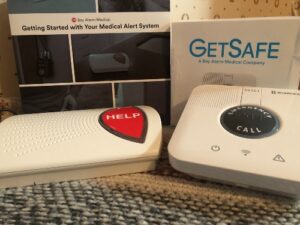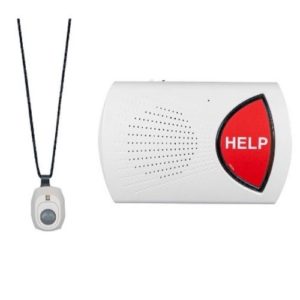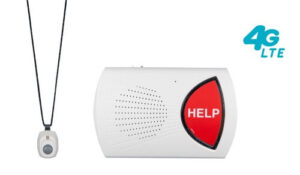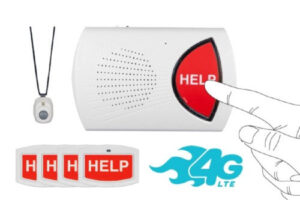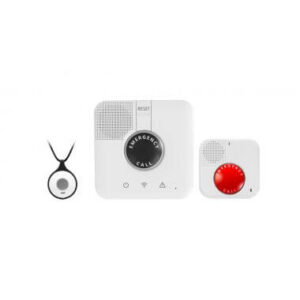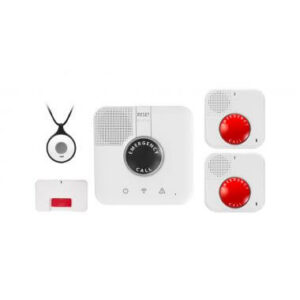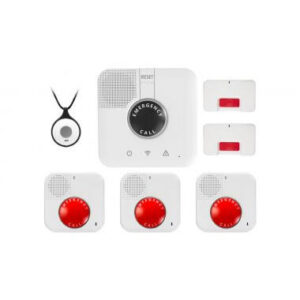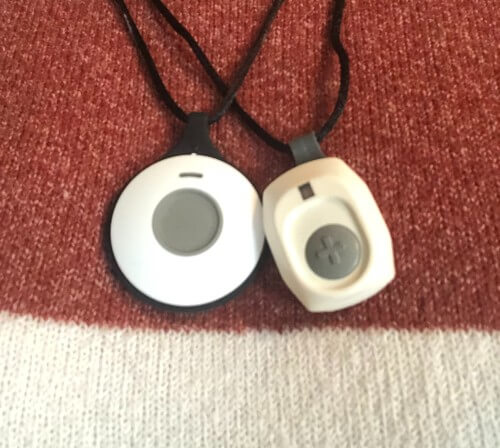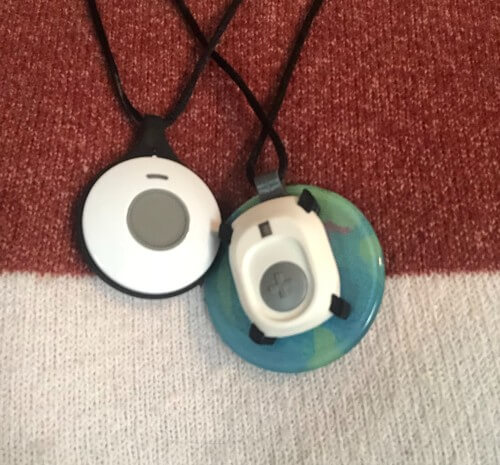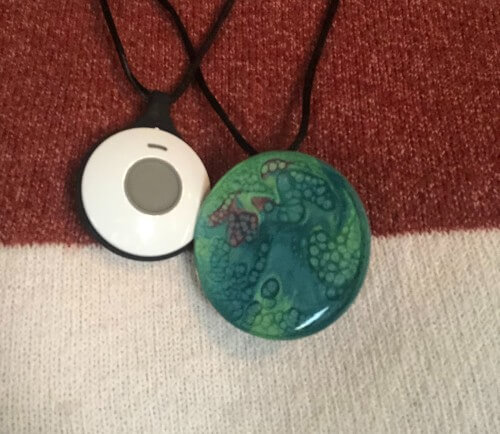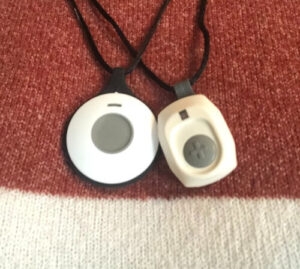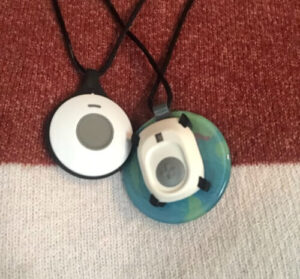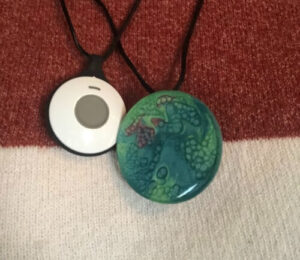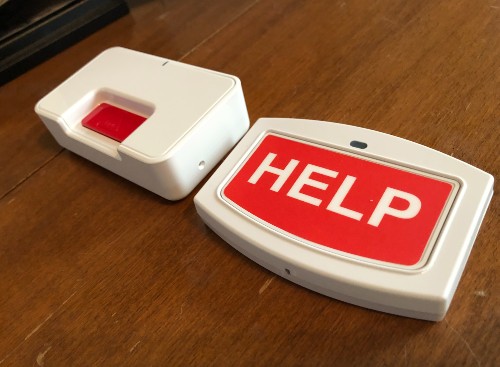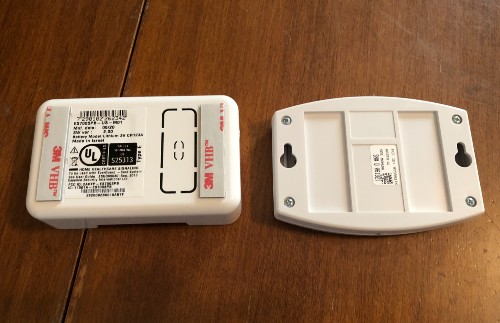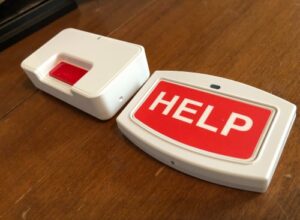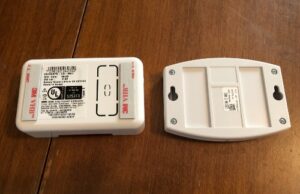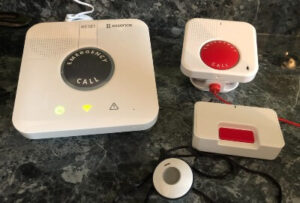GetSafe’s flat-rate monthly monitoring fee is completely unique among medical alert companies. As long as you can afford to pay for the equipment up front, you’ll enjoy affordable monitoring for less than $28 per month. Best of all, that price stays the same no matter how much extra in-home equipment you pile onto your order.
On the other hand, if you’d prefer to lease your medical alert system for free and pay a higher monthly price, go with Bay Alarm Medical.
Best mobile-only price: Bay Alarm Medical
Image: Cathy Habas, SafeWise
You have to buy a GetSafe in-home system before you can buy its GPS help button, whereas Bay Alarm Medical offers the mobile device as a standalone option.
The mobile alert’s up-front cost is $99 from either company. Bay Alarm Medical’s monthly monitoring price starts at around $30 and gets you the caregiver app but no fall detection. Adding automatic fall detection brings the cost up to about $40 per month.
On the other hand, the starting monthly price for a GetSafe mobile alert system is about $48 per month—$28 for in-home monitoring plus $20 for mobile monitoring. Adding fall detection and a caregiver app raises the price to about $58 per month.
If you want to bundle an in-home medical alert system with a mobile GPS device, Bay Alarm Medical is more affordable.
Best testing performance: Bay Alarm Medical
We tested Bay Alarm Medical’s In-Home Premium package and GetSafe’s Starter package to find out which one is easiest to use. Bay Alarm Medical gets our vote for this category thanks to better audio quality and easier range tests.
GetSafe’s poor audio quality made it difficult to hear the monitor during our test calls. We had trouble canceling calls, even though it should be as simple as pressing the “Reset” button on the base station. We also accidentally set off a call when conducting a signal range test with the GetSafe accessories.
Setting up and testing Bay Alarm Medical’s system was a breeze in comparison.
That said, GetSafe did have the fastest answer times during our test calls, averaging less than 30 seconds. In comparison, Bay Alarm Medical averaged a little less than 90 seconds. It may be worth struggling a bit with installation—or reviewing GetSafe’s instructional videos—in order to get help a full minute faster during an emergency.
Best home coverage: GetSafe
GetSafe’s equipment works up to 1,300 feet from the base unit, whereas Bay Alarm’s has a smaller range of 800–1,000 feet. You really only need to worry about a long signal range if you live in a multi-level home or enjoy sitting out in the yard.
Always do a range test
Keep in mind that walls and other obstructions between the base unit and the pendant will narrow the signal range even further. Always conduct a range test when you first get your equipment to make sure it covers your entire home.
We also like GetSafe for larger homes because you can add up to 16 wall buttons to the system. Bay Alarm Medical lets you buy up to four.
Plus, if you say, “Call 911, call 911” to get help through GetSafe’s voice-activated buttons, you’ll talk to the monitoring center through that button’s speaker. Otherwise, you’d have to shout to be heard through the base unit if it’s far away.
Best fall detection: Bay Alarm Medical
Bay Alarm wins this category by default since GetSafe doesn’t offer an in-home fall detection option. The only way to get automatic fall detection through GetSafe is to purchase the mobile help button and pay for the fall detection upgrade.
Who needs fall detection?
Talk to your doctor to determine your fall risk before choosing a medical alert system. Although no device detects every single fall, don’t skimp on this feature if you have a high fall risk and spend time alone.
A quick look at aesthetic differences
It’s important to find a medical alert system that gives you confidence whenever you wear the pendant or see the buttons around your home, so don’t forget to consider how a system looks.
Note that Bay Alarm Medical updated its equipment line after we had a chance to test it and take photos. Visit Bay Alarm Medical's website to see the new designs.
We like Bay Alarm Medical’s Bella Charms, which snap over the help button and turn it into a chic fashion statement. The GetSafe pendant doesn’t look too bad on its own, but you might find yourself hiding it under your shirt, making it harder to reach during an emergency.
The GetSafe pendant (left) is a little larger than the Bay Alarm Medical Pendant (right). Images: Cathy Habas, SafeWise
The standard wall buttons also have a different appearance. Both are about the size of a bar of soap, but the GetSafe button is bulkier. It’s mostly white with an inch-long red button, which is recessed to prevent false alarms if you accidentally bump into it.
In contrast, the entire surface of the red Bay Alarm Medical wall button can be pressed, and it’s not recessed. Bay Alarm’s button is also thinner and features the word HELP written in large letters. It’s the better choice if you have vision impairments since the red area is so much larger, providing good contrast against any background.
Bay Alarm’s wall button also has two nail slots on the back, whereas GetSafe’s button is installed with sticky tape.
The GetSafe wall button (left) is larger than the Bay Alarm Medical wall button (right). Images: Cathy Habas, SafeWise


